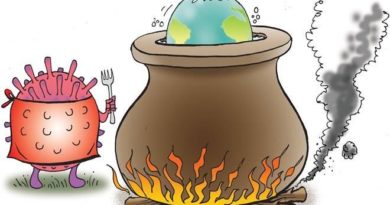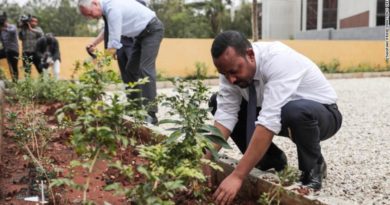Extreme heating: are we hot enough to act now on climate?
The cautionary tale of the boiling frog describes how a frog that jumps into boiling water will save itself by jumping straight out, but the frog that sits in the water while it gradually gets hotter and hotter will boil to death.
This summer, Europe has sweltered in its hottest ever July since records began, causing multiple deaths, closed offices and disruptions to flights and vital services. Wildfires broke out in the Arctic, with smoke-filled air swirling across an unprecedented area of Arctic wilderness. There is growing public alarm that the world is overheating and increasing frustration at the lack of action to urgently tackle what has become a climate emergency.
“Wildfires in the Arctic can be catastrophic for our climate,” says the UN Environment Programme’s peatlands expert Dianna Kopansky. “When permafrost peatlands thaw, dry out and burn, they release enormous amounts of carbon. Ash particles darken snow causing less sunlight to be reflected into space, and further increase heating. It’s a dangerous feedback mechanism to trigger.”
It’s estimated that the northern hemisphere’s frozen soils and peatlands hold about 1,700 billion tonnes of carbon—four times more than humans have emitted since the industrial revolution, and twice as much as is currently in the atmosphere.
New analysis of extreme hot weather events shows significant climate change—with new peaks and increased frequency of extreme temperature events in the last few decades compared to the pre-industrial era going back over the past 2,000 years.
According to three recent studies, there has never been a period in the last 2,000 years when global temperature changes have been as fast.
Meanwhile, a new study published by Nature predicts that parts of the world will “smash” temperature records every year in the coming century, pushing communities and ecosystems beyond their ability to cope.
Increasing temperatures and life-threatening heatwaves also introduce a secondary threat: increased demand for air conditioning. Farmers who lost herds of livestock and companies who lost multiple days of productivity to extreme heat this June and July will be better prepared next summer. The threat however is that the more we cool, the more we heat the planet. Emissions from air conditioning and refrigeration are expected to rise 90 per cent from 2017 levels by 2050. This increase would result in emission of 12 gigatonnes of carbon dioxide (GtCO2), equivalent to a third of our total emissions in 2017.
While alarm is justified, we do have the means and opportunity to turn down the thermostat, and one of the biggest solutions is the very thing that is going up in flames.
Protecting existing forests and other natural carbon stores such as peatlands, and re-foresting new areas, especially within city spaces, is many times more cost-and-impact-effective than any solution designed in a lab or a factory. While billions of trees have been planted, and the switch to renewable energy in many countries has been impressive, we are still a very long way from stemming global heating, with all its dangerous consequences.




